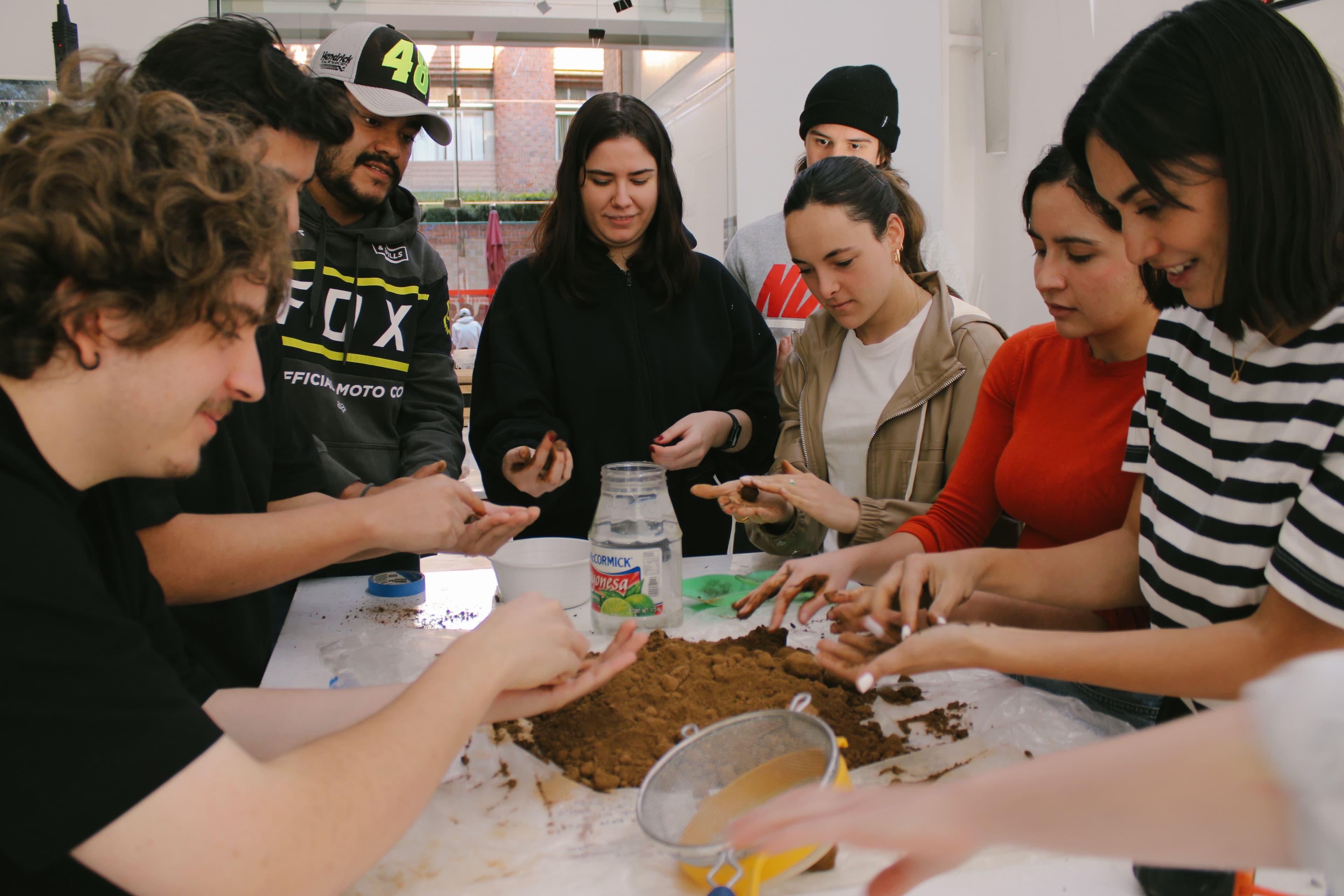1. The Terrablocks project centres around earth-based materials. What were the key physical or mechanical properties you needed to stabilise in your soil mixtures to achieve structural reliability?
To ensure the blocks were stable, we tested various combinations of material proportions. We created seven different mixtures using varying percentages of soil, lime, sawdust, and water to identify the most stable composition. The key goal was simply to achieve structural stability through these tests, without relying on advanced additives or treatments.
2. You sourced earth and aggregates from various sites near Mexico City. How did the local material context shape the block formulation, and what adjustments were necessary for consistency?
The local material context significantly influenced the block formulation. All materials were sourced within a 60 km radius of our university, allowing us to explore the potential of regional soils and aggregates. The students developed five different mixtures to test the behavior and limits of the soil when combined with various aggregates, adjusting the ratios based on weight.
The final mixture included:
- Pine sawdust from Zinacantepec, State of Mexico (provided by Innova Forestal),
- Soil from Calimaya, State of Mexico,
- Soil from Contadero, Cuajimalpa de Morelos,
- Gravel extracted from both soils using a 5x5 mm mesh.
These materials were blended in the following proportions:
- Contadero soil: 26.05%
- Calimaya soil: 20.84%
- Sawdust: 4.41%
- Gravel: 13.03%
- Lime: 6.25%
- Water: 29.42%
Adjustments were made throughout the process to ensure consistency and stability, particularly in terms of moisture content and the balance between fine and coarse particles. This hands-on exploration helped identify a formulation that was both locally grounded and structurally reliable.
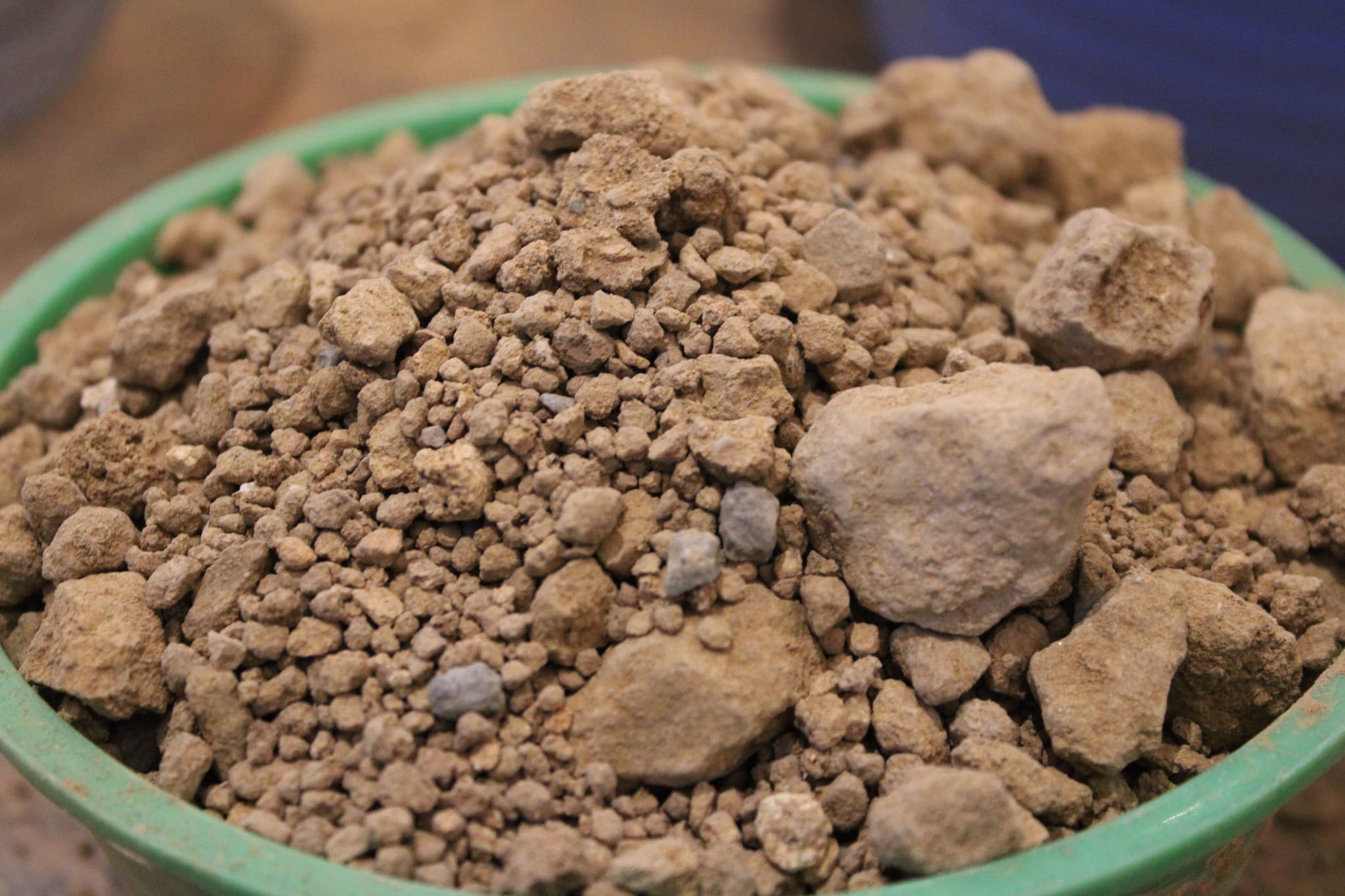
3. The blocks were formed using 3D printed negatives and silicone moulds. What technical advantages did this hybrid moulding approach offer in terms of surface detail, release behaviour, or production speed?
The fabrication team explored various mould-making strategies to preserve the original geometry while optimizing the process for construction and potential mass production. They adopted a hybrid approach using 3D-printed positives made from PLA with an Ultimaker printer, followed by casting silicone rubber moulds.
This method offered several technical advantages:
- Surface detail: The 3D-printed positives allowed for precise control over geometry, enabling the accurate transfer of fine surface details into the silicone moulds.
- Release behaviour: Silicone rubber provided excellent flexibility and non-stick properties, greatly facilitating the de-moulding process and reducing the risk of damaging the blocks.
- Production speed: The hybrid process balanced efficiency and quality. Each block required one day for mixing and casting, followed by three days of drying. Over four weeks, 20 blocks were produced.
In terms of scalability, the durability of the silicone moulds allowed for a potential production of up to 270 partitions. Despite producing only 20 units, the cost represented just 7.4% of the initial investment, highlighting the process’s cost-effectiveness and potential for scaled-up fabrication with minimal labor and time.
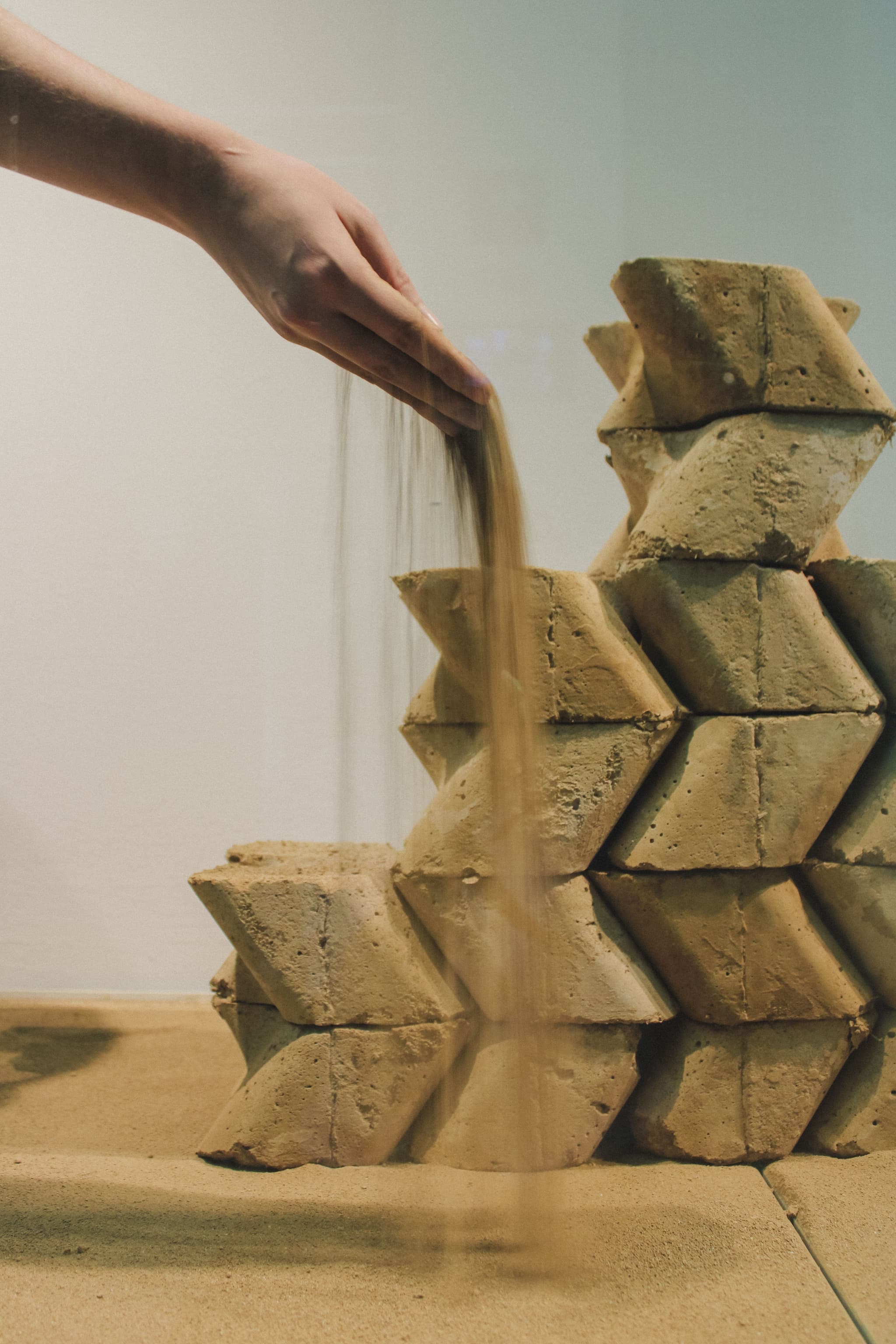
4. Earth is a living material with varying behaviours. How did you control shrinkage, cracking, or curing variability across blocks during the drying process?
As this was an academic project at the undergraduate level, we did not conduct in-depth research into the drying process or quantify shrinkage and cracking in a systematic way. Our focus was primarily on exploring material combinations and fabrication techniques. While we observed some variability in shrinkage and surface cracking between blocks, these were accepted as part of the learning process. Further development would require more controlled studies on curing conditions and moisture content to improve consistency and performance.
5. What experiments or trials were run to evaluate the load-bearing capacity or interlocking stability of the Terrablocks in modular applications?
In this research, our primary focus was on exploring new methods for manufacturing earthen blocks by moving beyond the traditional adobe format (typically around 20 x 40 x 10 cm). We experimented with a novel approach using custom 3D-printed PLA moulds to define the original geometry, followed by silicone negative moulds to cast the blocks using a raw earth and natural fiber mixture. This process was designed to support circular economy principles, allowing for potential reuse of the pieces.
While the project emphasized material experimentation and moulding techniques, no formal structural tests were conducted to evaluate the load-bearing capacity or interlocking stability of the blocks in modular applications. The aim was to explore the possibilities of form, fabrication, and material reuse rather than to produce construction-ready units. However, the modular geometry and interlocking potential remain promising areas for future research and testing.
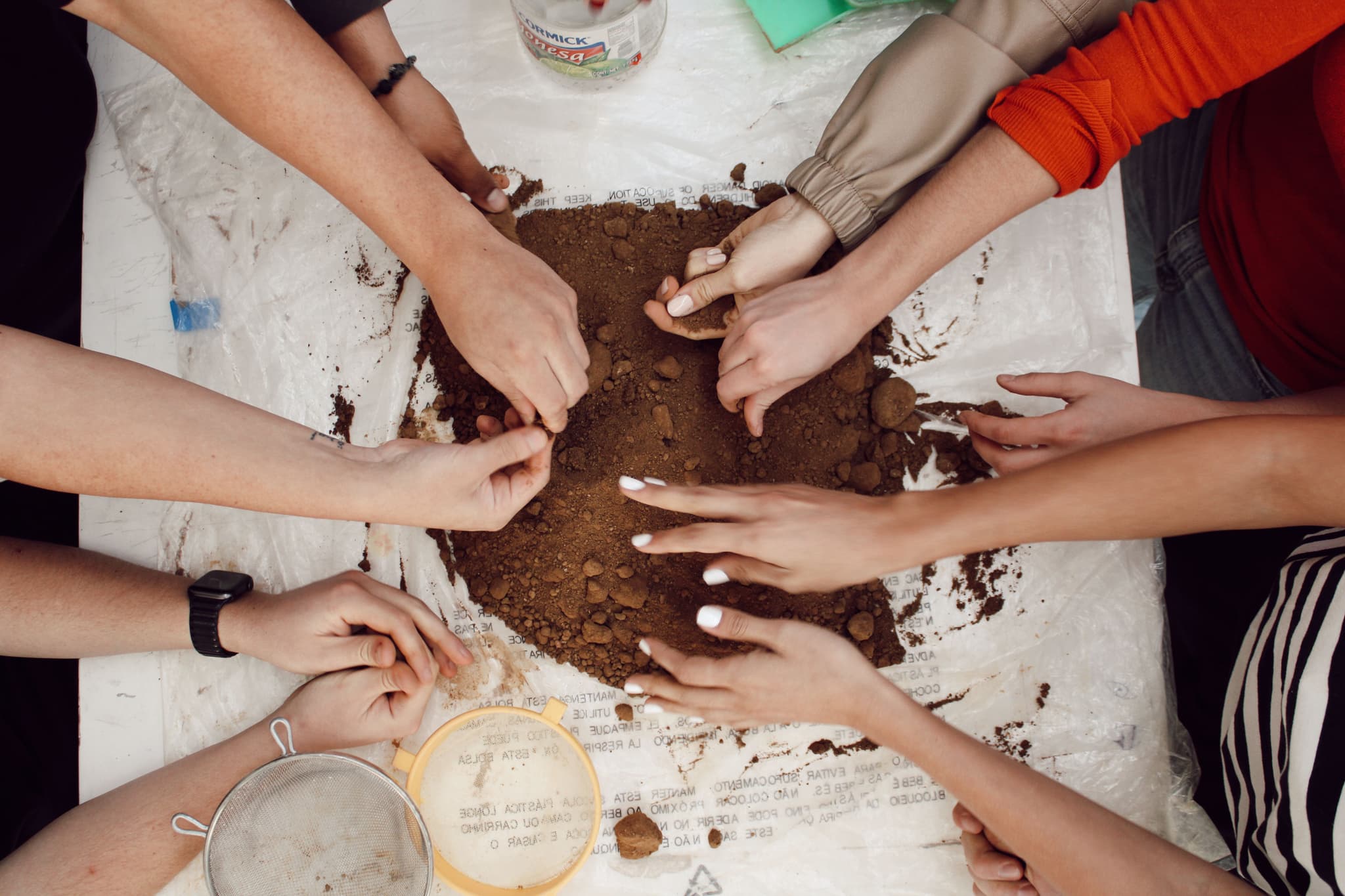
6. Have you explored the potential for scaling the Terrablock system into architectural formats—walls, pavilions, or public installations—and what technical adaptations would be required?
With this project, our goal was to encourage students to develop their own criteria regarding the use of technology and innovation in response to challenges of geometry, material, and fabrication. While we did not construct full-scale architectural applications, the Terrablock system was designed with modularity and scalability in mind.
The geometry of the blocks allows for replication and on-site assembly in various configurations—such as walls, lattices, columns, or other spatial compositions—opening up the potential for use in architectural formats like pavilions or public installations. The project also emphasized environmental awareness by prompting students to consider the origin and impact of the materials used.
Scaling the system would require technical adaptations including structural testing, refinement of the interlocking system, improved curing methods, and adjustments for stability under different environmental conditions. Nonetheless, the project serves as a foundational step toward applying this system at an architectural scale.
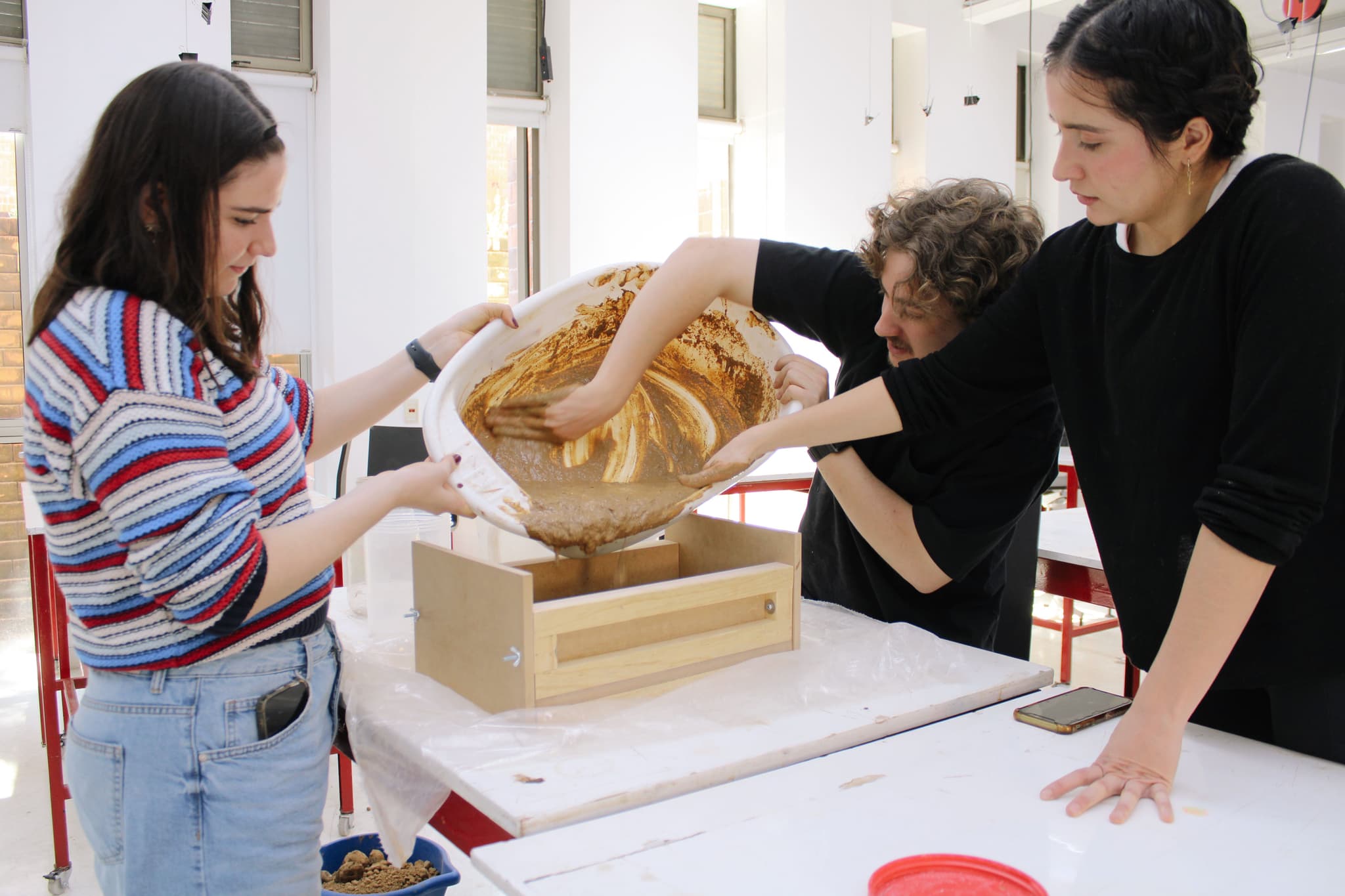
7. What’s next for Terrablocks—are you refining the mixture recipes, expanding the system’s architectural language, or working with industry partners to bring it into construction?
What’s next for Terrablocks is to continue exploring the architectural and environmental potential of earth as a construction material. While we are not yet collaborating directly with industry partners, the project has laid a foundation for future development in several directions.
We aim to refine the mixture recipes to improve structural performance and durability, while also expanding the system’s architectural language to include more complex assemblies such as shading elements, wall systems, or modular installations. Our approach emphasizes not only innovation in fabrication but also awareness of the broader impact of working with earth.
Using earth offers significant economic, social, cultural, and ecological benefits. It is abundant, low-cost, and renewable. Its thermal properties provide natural climate regulation, which can reduce the need for mechanical heating or cooling. Additionally, its malleability makes it ideal for crafting detailed forms and textures, offering both functional and aesthetic value. Terrablocks is an invitation to reimagine construction systems through a sustainable, accessible, and culturally resonant material.
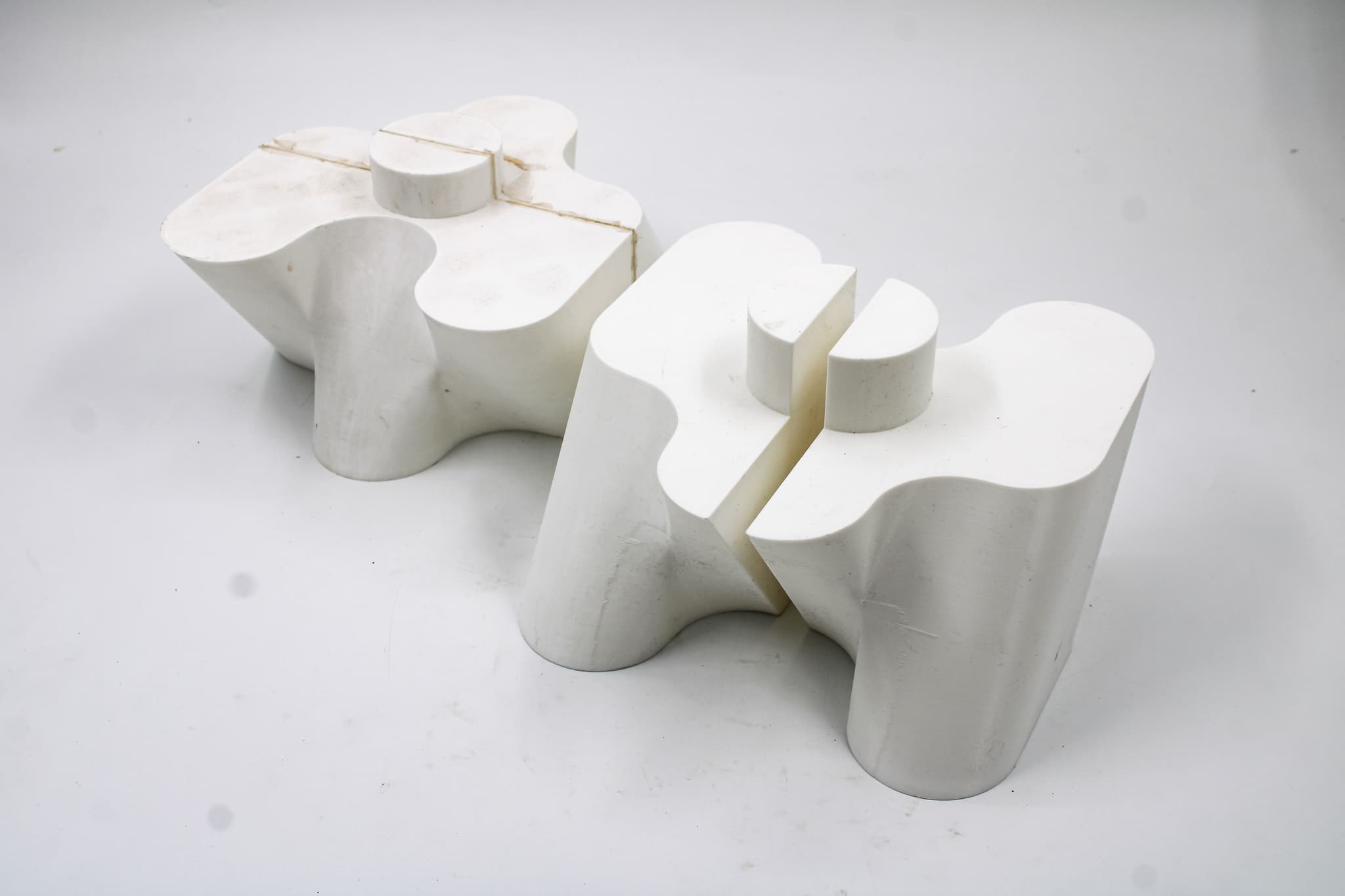
8. Looking ahead, what directions is Manufactura exploring—are you initiating new collaborations, or investigating other vernacular techniques and material systems?
Currently, Manufactura is focused on developing an improved earth-based mixture that incorporates limestone and selected food waste. This research not only aims to enhance the material’s structural and ecological performance but also seeks to address the growing problem of food waste by giving it a second life within the construction process. We are specifically exploring the use of food waste types that have a high volume of residuals in Mexico or in the specific context where we work, adapting our mixtures accordingly.
Additionally, we are using robotic 3D printing technology to enable faster, more efficient prototyping with greater creative freedom. This approach allows us to push the boundaries of form and fabrication while maintaining sustainability goals.
Looking ahead, we are exploring new collaborations with designers, researchers, and local communities to investigate other vernacular techniques and material systems that are both context-specific and sustainable. We are also working toward building the infrastructure needed to support scaled prototyping and broader community access—enabling more people to engage with low-impact, locally sourced materials and fabrication methods. This direction reflects our commitment to merging innovation with tradition, and to fostering a more circular, inclusive, and regenerative approach to design and making.
